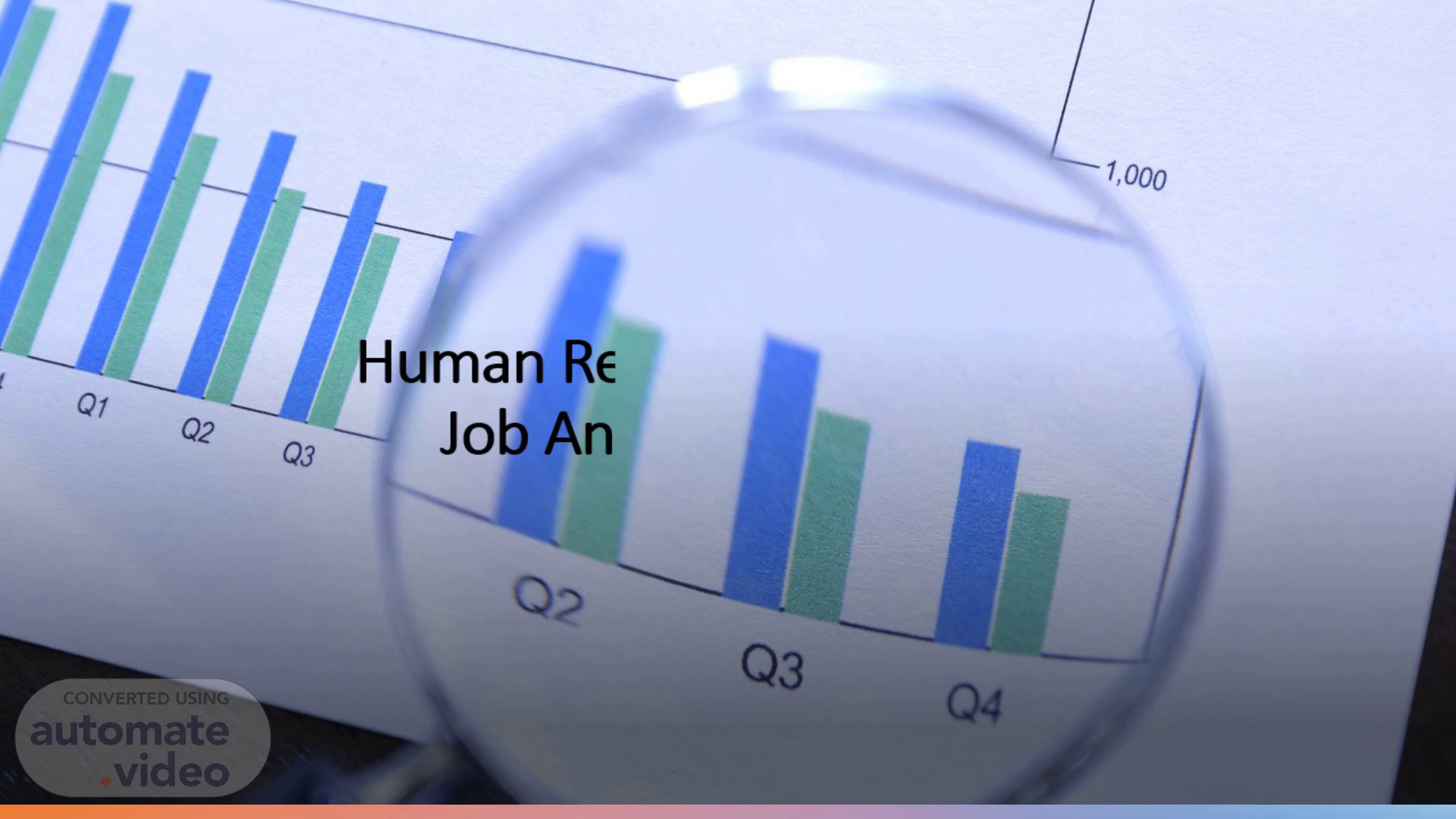Scene 1 (0s)
Magnifying glass showing decling performance. Human Resource Planning – Job Analysis & Design.
Scene 2 (8s)
Workforce Management. Definition. Human resource planning is a process that identifies current and future human resources needs for an organization to achieve its goals It is the continuous process of systematic planning to achieve optimum use of an organization's human resources This involves determining the current manpower and estimating the future requirements at different levels in different roles for a given time period..
Scene 3 (27s)
Human Resource Planning. Ideally done for the next 1-3 years The main objective is to acquire, utilize, improve and retain the human resources optimally and effectively This helps the organization determine the organizational/departmental strategy of recruitment or retention or retrenchment.
Scene 4 (42s)
Objectives of HRP. To forecast the required quantity & quality of employees To forecast the turnover/attrition rates To plan for the times of expansion or diversification or sell out (partial or complete) To foresee the effects of technological changes on the business & HR needs To develop the existing resources for the future requirements.
Scene 5 (59s)
Factors Affecting HRP. Internal Factors External Factors Organizational Plans & Strategies Political Nature and size of Business Economic Culture & Structure of Organization Social Composition of existing workforce Technological Mergers & Acquisitions Environmental Budgetary Constraints Legal.
Scene 6 (1m 11s)
A Situation. Imagine that you are the HR Head in a new-age tech company during 2022-2024. What are the factors you need to consider while doing the Human Resource Planning for your organization?.
Scene 7 (1m 23s)
Terms used in HRP. Job: A collection of tasks assigned to a position in the organizational structure Job Analysis: The process of identifying the tasks comprising a particular job to assess and organize them productively Job Analysis helps in identifying the main features of the job, the tasks undertaken, the results to be achieved and how the job is related to other jobs in the organization.
Scene 8 (1m 43s)
Job Analysis. Job analysis is the process of studying and collecting information relating to the operations and responsibilities of a specific job. Steps involved Collecting and recording job information Checking the job information for accuracy. Writing job description based on the information Using the information to determine the skills, abilities and knowledge that are required on the job. Updating the information from time to time..
Scene 9 (2m 4s)
Job Analysis 2x2 Matrix What Job Holder Does Responsibilities Duties Tasks Projects Expected Outcomes from the Job Holder Results Products Services How the Job Holder Does it Techniques Approach Tools Qualified Job Holder Requirements Qualifications Knowledge Skills Abilities Competencies.
Scene 10 (2m 14s)
[image] Job Analysis Job Specification • • • • • • • Job Description Job Title Job Location Job Summary Reporting to Working Conditions Job Duties Machines to be Used Hazards • • • • • • Qualifications Experience Training Skills Responsibilities Emotional Characteristics Sensory Demands.
Scene 11 (2m 24s)
Data Collection Techniques. Questionnaire Interview Observation Critical Incident Diary Maintenance Technical Conference Task Inventory Analysis Job Performance.
Scene 12 (2m 34s)
Job Description. Job Description is an important outcome, which is basically descriptive in nature. It provides both organizational information (like location in structure, authority etc.) and functional information (what the work is) Job Description contains information such as • Job title / Job identification / organization position • Location • Job summary • Duties/ responsibilities • Machines, tools and equipment • Materials and forms used • Supervision given or received • Working conditions • Hazards.
Scene 13 (2m 55s)
Job Specification. Job specification is a written statement of qualifications, traits, physical and mental characteristics that an individual must possess to perform the job duties and discharge responsibilities effectively. Physical Specifications Mental Specifications Emotional & Behavioural Intellectual specifications ( includes education) Demographic Specifications.
Scene 14 (3m 11s)
Job Design. A good job design ensures that work is done smoothly and seamlessly in the organization in such a way that the organizational goals are achieved while making the employees satisfied and rewarded. It results in clarity, efficient systems and procedures and removal of redundant processes. This in turn leads to improved productivity and optimal usage of resources. A well-designed job should have the characteristics of Task Identity, Task significance, Skill Variety, Autonomy and Feedback.
Scene 15 (3m 33s)
Enhancing Job Satisfaction. Job enrichment is the inclusion of work practices that challenge and motivate the employees for enhanced performance Job Rotation is the moving of employees from one job to another which is beneficial for the organization and the employees, both Job Reengineering involves redesigning of business processes to achieve radical improvements in cost, quality and productivity etc..
Scene 16 (3m 51s)
The changes post Pandemic. Economic Slowdown Business uncertainties First it was ‘Great Resignation’ & ‘Quiet Quitting’ Now it is Lay-offs & Shutdowns and ‘Quiet Hiring’ Remote Workers Hybrid work models Technological changes like AI & ML affecting employment Personal Challenges owing to post-COVID impact.
Scene 17 (4m 6s)
The impact. [image] White bulbs with a yellow one standing out.
Scene 18 (4m 24s)
Leaders say….. [image] White paper ships being led by a yellow ship.
